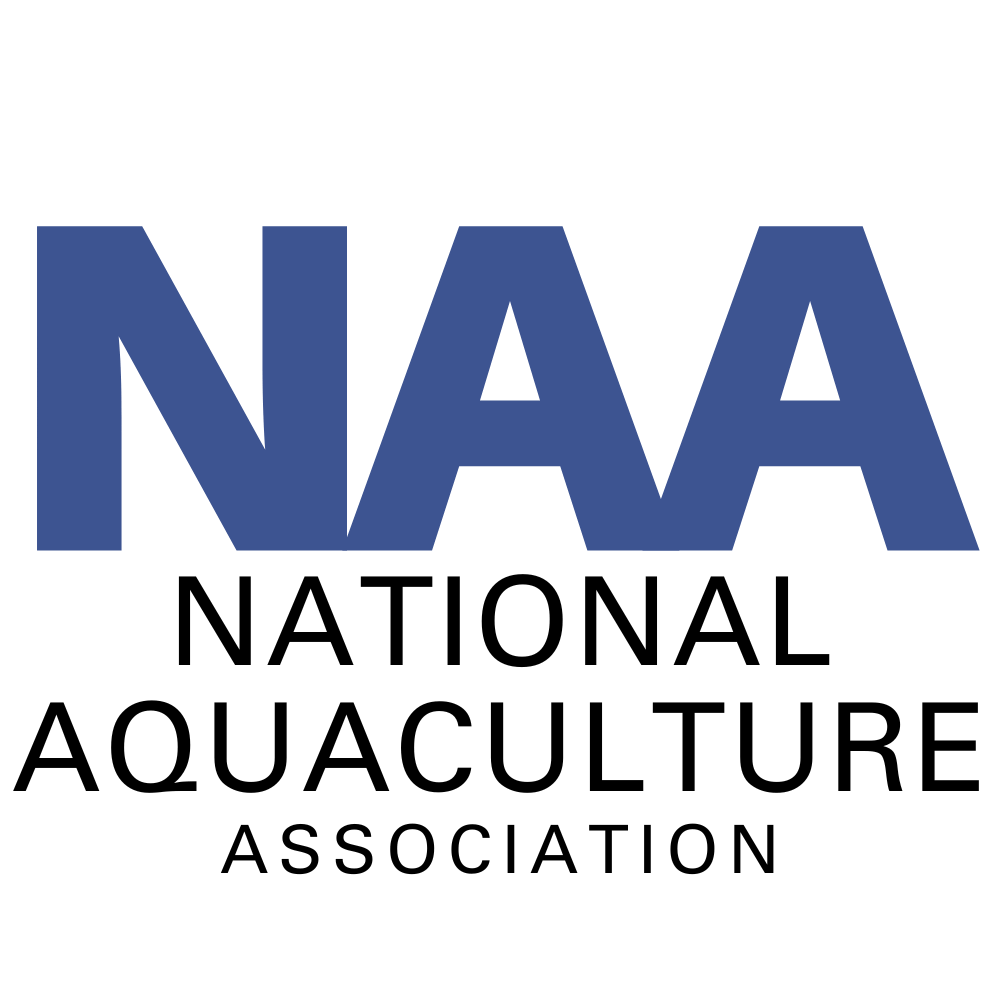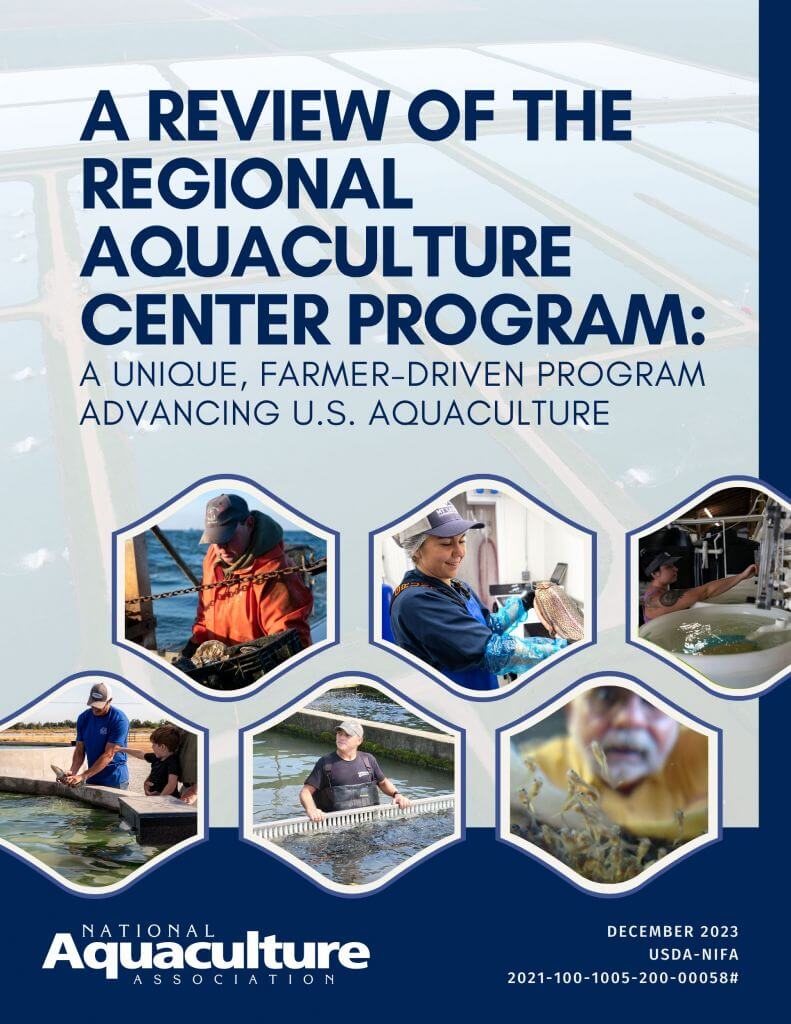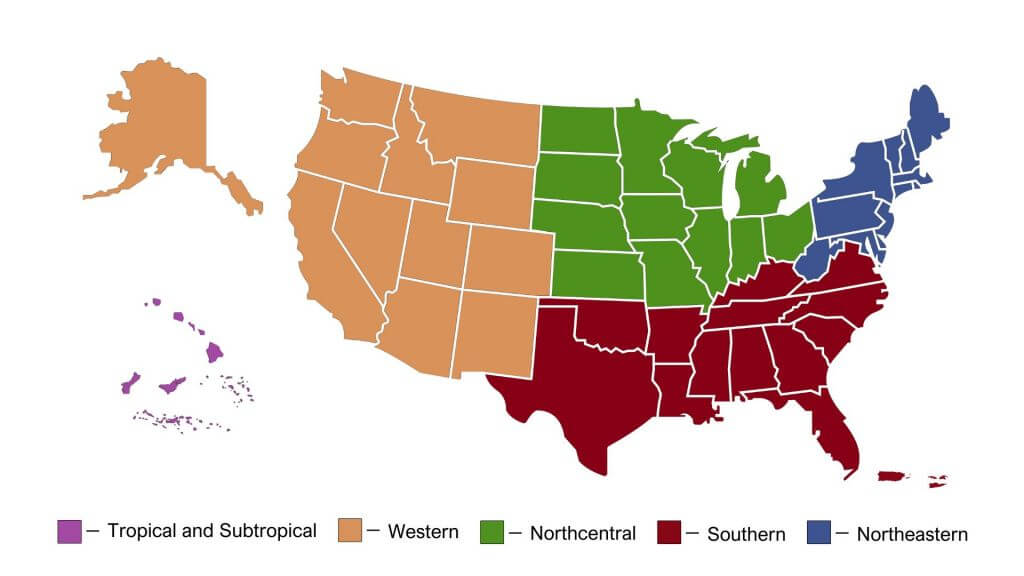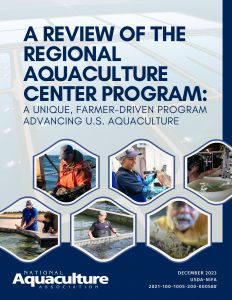NAA Organized an Independent Review of USDA’s Regional Aquaculture Center (RAC) program
Mission of the Regional Aquaculture Center Program
Support aquaculture research, development, demonstration, and education to enhance viable and profitable U.S. aquaculture production for the benefit of consumers, farmers, service industries, and the American economy.
Overall Goal of the RAC Review Project
Evaluate the Regional Aquaculture Center program and develop recommendations to provide the best service to the aquaculture community.
Key Finding of the RAC Review Project
The Regional Aquaculture Center program is a unique and effective grant program for U.S. farmers and is dramatically underfunded.
About USDA's Regional Aquaculture Center Program
The key function of each Regional Aquaculture Center (RAC) is to ensure that regional needs of aquaculture farmers are identified and prioritized with subsequent development of iinterdisciplinary teams of researchers, Extension personnel, and farmers who develop research and Extension projects to address the prioritized needs. The RAC process ensures that project results are properly integrated across disciplines and functions (research/Extension) with timely delivery of results to stakeholders.
Essential Guidelines for Operation of RACs (1986)
- Information exchange
- Research & Extension linkages at regional levels
- Identify regional research needs
- Research needs integrated & delivered by Extension educational programs
- Coordination of interregional & national programs
Administrative structure & management
- Board of Directors
Industry Advisory Council
Technical Committee (Research & Extension)
About the RAC Review Project
The National Institute of Food and Agriculture of the U.S. Department of Agriculture authorized and funded a programmatic review of the five Regional Aquaculture Centers in 2021 in response to a suggestion to the agency from the National Aquaculture Association (Award # 2021-100-1005-200-00058). The Review Team consisted of Carole Engle, Gary Fornshell, John Hargreaves and Gary Jensen.
Key Questions:
- What has been accomplished after 37 years of funding?
- What would be lost if program never existed
- What can be further accomplished?
- What is future outlook for program?
It’s one of the best programs ever conceived on how to get industry, research, and Extension involved together to solve problems and keep industry moving forward
- comment by aquaculture farmer
Because it’s USDA and no overhead is allowed, those direct dollars can go a long way compared to other funds earmarked for aquaculture.
- comment by aquaculture researcher
I wish I had ten more centers like the RAC.
The RAC is an ideal role model.
- comment by university administrator
serving on the Board of Directors
More funding agencies or organizations or processes should follow this model.
- comment by aquaculture researcher
The sturgeon industry would not exist today without western regional center support.
- comment by aquaculture Extension agent
The RAC Program is practical. We’re not trying to find a new particle in an atom. Billions? Spend a few million to find better ways to make best use of our precious water, to have food to eat.
- comment by aquaculture farmer
That bird depredation study saved us hundreds of thousands of dollars.
- aquaculture farmer
Methods
- Document review
- 76 individuals from 35 states and 32 different disciplines
- Project performance analysis (funded 2014; terminated 2021)
Categories of those interviewed:
- Directors
- Board of Directors
- Researchers (TC)
- Extension specialists (TC)
- Farmers (IAC & others)
- Prominent national leaders
Results
- Program Breadth & Scope
- 1987-2020
- 170 entities funded
- 618 projects funded
- >1,283 participants
- 55 states, territories, countries
- >45 subject matter areas
- Uniqueness of the RAC
- Farmer-driven
- Direct interaction among farmers, researchers, Extension
- Regional
- Multi-state collaborations
- Interdisciplinary
Key Findings
The Regional Aquaculture Center program is woefully and dramatically
Key Findings
- Dramatically under-funded for diversity of U.S. aquaculture.
- Strong support to continue program.
- Generated strong economic impacts on major sectors.
- Supported proof of concept for many species.
- Created foundation of knowledge to overcome husbandry bottlenecks.
Key Benefits to U.S. Aquaculture
- Rigorous science to address regulations.
- Libraries of deliverables (publications, etc.)
- Support for Extension services.
- Economic & marketing research.
- Responses to disease challenges.
- Support for state aquaculture associations.
- Workforce development training.
- Collaborative team building.
- Networking across each region.
Key Recommendations
Increase the annual budget of the Regional Aquaculture Center program to with periodic adjustments for inflation.
Secondary Recommendations
- Improve effective communications of the Regional Aquaculture Centers internally and externally.
- Address the continued loss of Extension capacity for aquaculture.
- Increase engagement of the National Institute of Food and Agriculture with host institutions and with the Regional Aquaculture Centers.
- Streamline project development and implementation processes.
- Address dilemma related to allowing Facilities & Administration/Indirect Costs in the Regional Aquaculture Center program.
- Initiate succession planning for Directors.
The RACs were described as a “best kept secret.” The U.S Department of Agriculture-National Institute of Food and Agriculture and the RACs need to share and disseminate program accomplishments and impacts widely.
RACs need to promote their centers. More outreach is needed to expand awareness of the RAC program and its benefits to aquaculture farms. Websites need to be improved and upgraded with real-time information, new projects approved, results of recently completed projects, publications (scientific and Extension), and Extension materials (fact sheets, infographics, videos, newsletters). Farmer testimonials, farmer stories and experiences with RAC projects are needed to better relate to and connect with the farmer community, and ensure their voices are heard.
Suggestions for improving communication include:
- Working through farmer associations.
- Working through the Extension community.
- Increase the scope and frequency of email communications.
- Revise and improve RAC websites.
- Increase social media presence.



